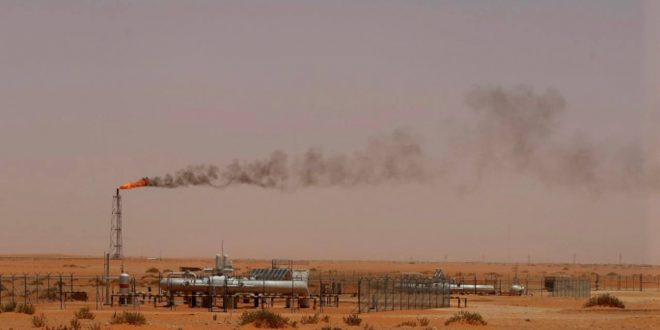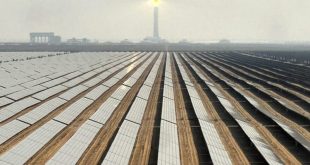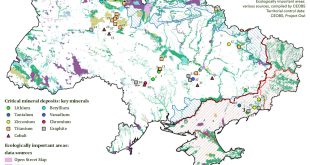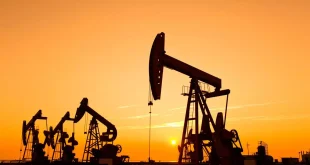Analysis: As the global economy recovers from Covid-19, oil production and prices are expected to surpass pre-pandemic levels. But with changing market dynamics and acceleration towards renewables, the energy market could be in for a volatile year.
The economies of energy-producing countries in the Middle East will be heavily reliant on energy market stability in 2022.
A gradual focus on the energy transition process will intensify in energy-producing countries in the Middle East, gradually reducing the role of fossil fuels.
The volatility in the energy market of the previous two years will continue in 2022, and oil exporter states in the region will have to battle with it. The unequal pace of the world’s economic recovery from the Covid-19 pandemic, exacerbated by the emergence of new virus variants, impedes the steady rebound in oil demand.
Highly reliant on oil and gas exports, Gulf countries will bear the implications of macro-economic processes. One of the most significant challenges for Middle East economies will also be the potential interest rate increase by the US Federal Reserve due to unprecedented inflation in the country.
“Historically, the strengthening of the US dollar has inversely impacted oil prices,” Rauf Mammadov, resident scholar on energy policy at The Middle East Institute and non-resident fellow at Jamestown Foundation, told the The New Arab.
“The unequal pace of the world’s economic recovery from the Covid-19 pandemic, exacerbated by the emergence of new virus variants, impedes the steady rebound in oil demand”
Economy and energy in MENA 2022
Forecasts show that energy prices and oil production will continue to rise in the Middle East and that vaccination against Covid-19 will continue across the region. This will increase the upward pressures on consumer prices, and it is predicted that the inflation rate in the region will reach 5.8% in 2022 and 4% in 2023.
The MENA region is expected to see economic progress in the near future, with GDP growth estimates of 5.2% and 4.6% in the years 2022 and 2023, respectively. These estimates are based on the assumption that potential new Covid-19 waves would be curbed with continuing vaccinations in the region and that, though within OPEC+ quotas, oil production will increase and energy prices will be high.
Meanwhile, in energy-importing MENA economies, energy prices are expected to be consistently high and the global supply chain is likely to be disrupted, causing increasing pressures on consumer prices. In the MENA region, the average annual consumer price index (CPI) growth is predicted to be at 5.8% and 4.0% in the years 2022 and 2023.
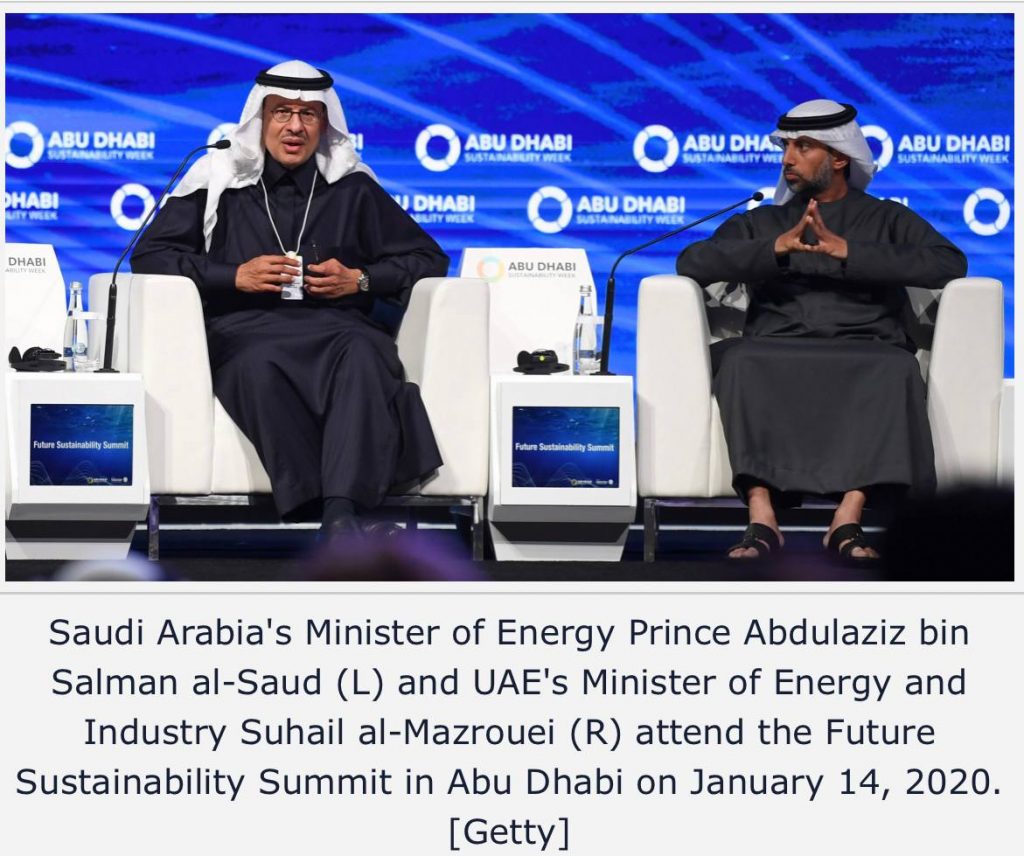
Inflation is not expected to undergo radical changes and it is unlikely that key policy rates will increase in the first half of 2022 by the US Federal Reserve. Hence, it is unlikely that there will be changes in financial policies in the region in the near future, particularly in countries whose economies are based heavily on the US dollar.
As economic momentum continues to strengthen and recover after the downswing due to the Covid-19 pandemic, this recovery will benefit overall external and fiscal positions in different ways.
A new era in energy security
The pandemic reminds us that current energy security policies need to evolve. Reaching net carbon goals is difficult for countries in the region with heavily industry-based economies. When this is the case, decarbonisation is not easy to accomplish, particularly when fuel subsidies promote consumption.
A 2% increase in industry emissions from gas is expected this year, which is much higher than what could be compensated by a 0.3% decrease in oil emissions in industry. With the decarbonisation of industrial and refining sectors, in which electricity usage is often costly and not always possible, it is a very challenging endeavour for Middle Eastern countries to reach the targeted net-zero gas emissions.RELATED
In a report on the challenges facing the global energy market, Wood Mackenzie identified five top trends this year.
When it comes to energy transition, record amounts of cash flows are under scrutiny; operators are seeking to implement their plans in terms of Scope 1 and 2 emissions; rates of oil and gas investments are still of vital importance; the service sector remains vulnerable to being impacted negatively, and explorers are still keen on seeking alternative pathways for energy transition.
In the monthly oil report of OPEC, it was stated that demand for oil was expected to reach approximately 100.8 million barrels per day this year, which is very close to the figure of slightly above 100 million in 2019 prior to the pandemic.
To illustrate, it is predicted that China will consume approximately 15 million barrels of oil per day in 2022, which is 1.5 million barrels more than it consumed in 2019. Given the direct impact of oil supply on oil prices, experts believe that the behaviour of OPEC member countries in 2022 will have a significant impact on the overall market.
“Everything is expected to be high in 2022: production, demand, exports, rigs, completions, prices, and costs. The average price for 2022 is expected to be higher than the average price in 2021, but there is no support yet for $100 oil”
“The most important development in 2021 was not the recovery of oil production and demand, nor oil prices,” Dr Anas Alhajı, Editorial Advisor of Attaqa, the only energy media platform in Arabic, told The New Arab.
“The most important development that will have an impact on 2022 and beyond is the new behaviour of major oil-producing countries with OPEC+ who have spare capacity but refused to increase production at the expense of members who are not able to increase production. This is a major change in the oil market structure,” he added.
The investment of major oil-producing countries in new energy is a fundamental dichotomy – like Microsoft turning to Apple computers. By doing this, the oil market will get weaker and weaker.
On the other hand, new energy can provide economic diversity, skills, and revenue streams, while reducing the use of hydrocarbon resources to increase export earnings. For GCC countries, the domestic energy transition is less important than the global transition. The domestic energy transition could free up some resources for exports, but most oil revenues are influenced by international forces.
The Gulf Cooperation Council (GCC) countries, with the exception of Bahrain and Oman, are still in a strong position even if global oil prices fall. They have the lowest cost of oil extraction in the world, and some even have the lowest percentage of carbon emissions in the production cycle.
In the context of a pandemic, vaccination is one of the main factors influencing the economic growth of countries in the region. With the increase in vaccination, significant progress has been made in the process of returning economies to normal, but new strains of the virus, such as Omicron, can disrupt this process.
Moreover, the rate of vaccination varies greatly across the region. Countries such as Bahrain, Saudi Arabia, and the United Arab Emirates (UAE) have been able to perform satisfactorily in the field of vaccine coverage, and Iran and Kuwait have also made significant progress.
However, countries such as Algeria, Egypt, Iraq, Lebanon, Syria, and Yemen have not performed well in this regard, and this could expose them to new waves of outbreaks and negatively affect their economies.
Given the increase in market demand in 2021, it is natural that the average oil price this year will increase.
“Everything is expected to be high in 2022: production, demand, exports, rigs, completions, prices, and costs. The average price for 2022 is expected to be higher than the average price in 2021, but there is no support yet for $100 oil,” Dr Anas Alhajı says.
“Oil production of most Middle East countries is expected to increase with notable increases in the production of Saudi Arabia, the UAE, and Iran. Saudi Aramco is expected to continue its programme to increase its production capacity to 13 mb/d.” RELATED
China’s changing oil strategy in the Middle East
AnalysisAustin Bodetti
Energy market dynamics have changed in recent years, and in the future there will be competition in the renewable energy technology sector, especially in the battery sector.
Financial institutions will invest more in clean energy, and the conditions for attracting investors in oil and gas fields will gradually become more difficult. China‘s huge financial resources will increase the conditions for Beijing to increase its influence in the energy infrastructure of developing countries, especially the Middle East.
Increasing investment in renewable energy can both be effective in controlling environmental pollution and provide employment for more people. In that regard, 2022 could be the beginning of the energy transition process in the region.

